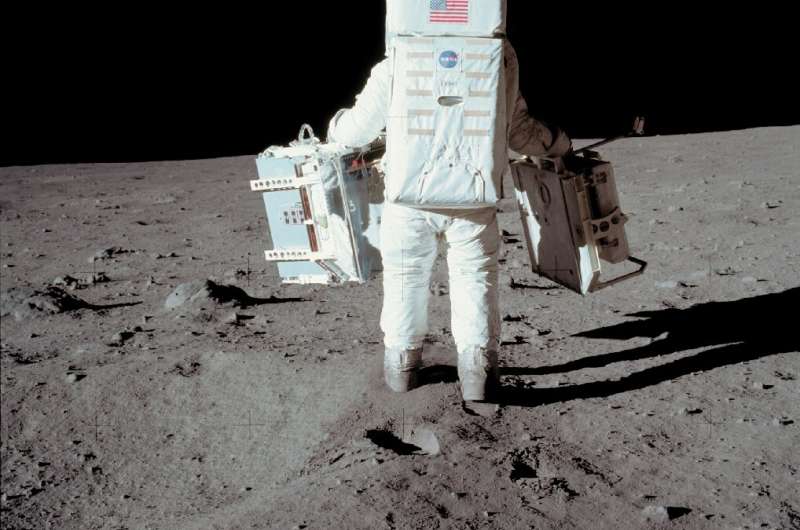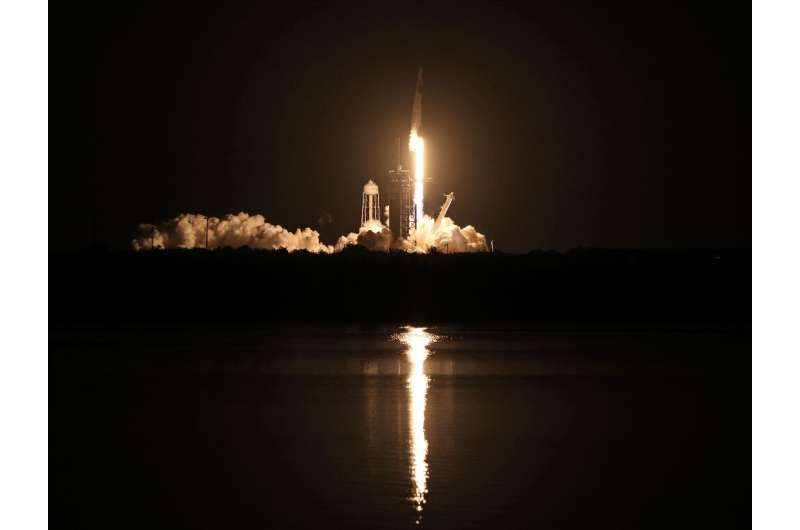Crew members on the ISS get some protection from Earth's magnetic shield.
Venture further into space, however, and they become sitting ducks exposed to highly charged particles.
"It's a really big problem for space exploration," said Canton.
"You need to make sure they haven't received a lethal dose before they even set foot on Mars, or stay on the Moon too long."
'Like a wave'
Before scientists can devise ways of protecting their spacemen, they need to precisely measure what they are up against.
That is the objective of the Lumina experiment, which uses a device based on optical fibres dipped in phosphorus to measure the amount of radiation passing through it.
"When it irradiates, it darkens very quickly," explained Sylvain Girard, a researcher at the Hubert Curien laboratory and coordinator of the experiment.

By measuring the rate of darkening and comparing that to the intensity of light signal injected into one end of the apparatus, scientists can accurately deduce the dose of radiation received.
It will allow researchers to measure radiation in real time, with sufficient sensitivity to detect a sudden variation such as that provided by a solar storm.
These unpredictable events propel a flow of highly charged and harmful particles into space.
"It's like a wave, and it takes roughly an hour to swell before it reaches its maximal flow," said Nicolas Balcon, a radiative environment engineer at CNES.
On a long space voyage, "if we detect a sudden increase, we could save the electronics, get an astronaut back inside the craft, or protect them within shelters that attenuate certain radiative forces," he added.
Telerobotics and virtual environments
To work for any length of time in the hazardous environment of space, future travellers to the Moon further afield will also have to master telerobotics.
This will include piloting a rover on the Moon's surface from a station orbiting the satellite, according to Canton.
The Pilot experiment will look into how astronauts "use tactile and visual information at their disposal" in order to better design future cockpits, he said.
French astronaut Thomas Pesquet, once he makes it to the ISS, will wear a virtual reality helmet combined with handheld devices "because dexterity and refined motor skills are really affected by weightlessness," added Canton.
"You can't feel the weight of your arms or the forces they exert."
Pesquet will have to train himself to handle a robotic arm tasked with capturing a virtual vehicle.
The helmet will also be used for the Immersive Exercise experiment, which will plunge astronauts into a virtual environment as they pedal on CEVIS, the training bike ISS residents use to limit the muscle loss that comes with prolonged weightlessness.
And the experiments don't end when astronauts end their day. They will wear a headband while sleeping in order to give researchers insight into the different phases of sleep "to understand how confinement and microgravity affect its quality," said Canton.
Explore further
© 2021 AFP



